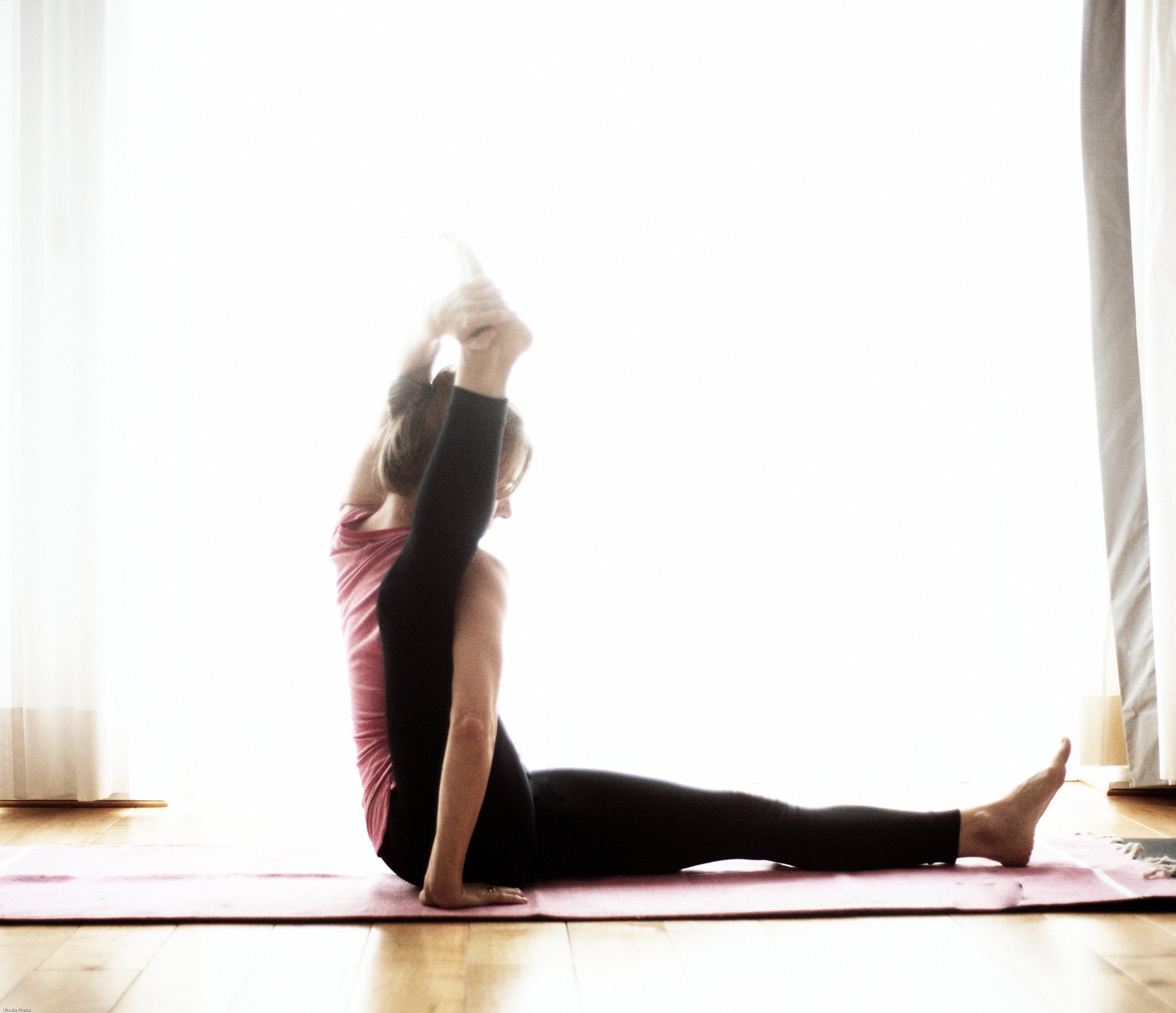Two poses that prepare the leg behind back poses
Marichyasana A is a pose that prepares leg behind head poses. The knee is already above or behind the back. Sometimes this is the pose I exercise when my body feels too stiff for these leg behind head poses. Important is to move forward and to bring the abdomen close to the leg. To bind is the next step. It can be useful to stretch forward and to bind the hands in front of the foot.
For me the asana in the second picture is a very nice preparation, too. I stretch the leg and I stretch the body. The hand gives support. It’s not all or nothing. Tiny steps in the right direction are sometimes the best advice in order to approach challenging asanas.
Of course I appreciate the day off today.
Might be that I do some asanas today or strength training. I will surely not practice Ashtanga yoga.
Leg behind back
Most asanas of the first Ashtanga yoga series are forward bending asana. It seems to me as if all these asanas shall prepare the body for one of the most difficult asanas of primary: supta kurmasana. Supta kurmasana is one of the four core asanas of primary. Most people struggle with this pose. Often this pose is not possible even after years of practice.
Supta kurmasana means to take both legs behind the back. Then one lowers the head to the floor. The arms bind behind the back. This is advanced.
There are approaches to supta kurmasana that are more reasonable than trying something again and again for years.
First one must be able to take one leg behind the head, before one tries to take both legs behind the head. This is a difference. This was the way I learned supta kurmasana. I had a flexible teacher who ‘allowed’ me to do second series even though I was not able to do supta kurmasana. Soon I learned to take one leg behind the head. After this interim step supta kurmasana was possible one day.
In order to adjust myself I put one leg behind my back while lying on the floor. That way my body can push my leg backwards. There is much less pressure on the neck. It allows me to stretch the body. After this exercise it becomes easier to sit in that position.
Each pose shall feel good finally. This feeling good experience is easier to get when on the back. It’s more relaxing than sitting. In the above pose the body pushes the leg to the ground. When in a sitting position, the leg pushes the neck forward.
It can make sense to hold this interim asana up to a minute. The body and mind need time to relax.
After this preparation pose I exercised eka pada sirsasana (see first picture). It allowed me to have my back rather straight.
I practiced primary. this morning. It was good to practice with an empty stomach before breakfast. During the last decade I have learned some asanas, surely. More important is that I learned how to learn these challenging asanas.
Self-study is recommended, but how?
To hold an asana longer than 5 breaths can be useful.
Finding similar, but easier asanas is very helpful
To find out how one can adjust oneself can help a lot, too.
To encourage oneself is also important. Yes, I can.
Today I still omitted supta kurmasana. I feel it already, it becomes possible again, soon.
I’m thankful for a challenging practice without back pain.




